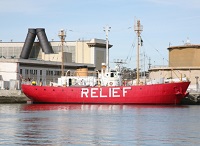After tragedies like the Boston Marathon bombings or Hurricane Sandy, there is an inspiring and admirable outpouring of support to help out those affected. People seek to carry this out is different ways: Crowdfunding is a newer mechanism to help, but a longstanding response has been to create new organizations that are focused on assisting victims of particular events.
The IRS arguably encourages the formation of new organizations to a degree by granting expedited review of exempt status to organizations that have a purpose of providing disaster relief to victims. However, it is worth pondering whether creating a new organization is the best way to help out. Even if expedited review is granted, it takes some time and resources to get an organization up and running. Many new organizations cannot get money distributed as quickly as hoped, and may suffer backlash from the public as a result. A recent example is the charity set up by Pat Christie, the first lady of New Jersey. The organization was criticized last month for not having distributed any funds to victims close to five months after the hurricane. And while there is oversight and due diligence that needs to be done to ensure that aid is going to the right recipients, which may help explain slower distribution, it stands to reason that accomplishing this important task while trying to get a new organization off the ground is a hefty task for anyone.
However, there are alternatives to creating new organizations that can help get funds to needy victims both on an immediate and ongoing basis. Giving to an existing organization that has experience in such work, and as such has key infrastructure and procedures already in place to do so, is one. Another option is looking to an organization, such as a community foundation, to create a specialized fund. This isn’t a separate organization that would require its own 501(c)(3) status, but would nonetheless have a restricted purpose to benefit a certain class of individuals that have been affected. An example of this is the Colorado Fire Relief Fund 2012, which was created at the Denver Foundation and made distributions to address intermediate-term needs resulting from last year’s devastating wildfires.
Hat Tip: Nonprofit Law Prof Blog


